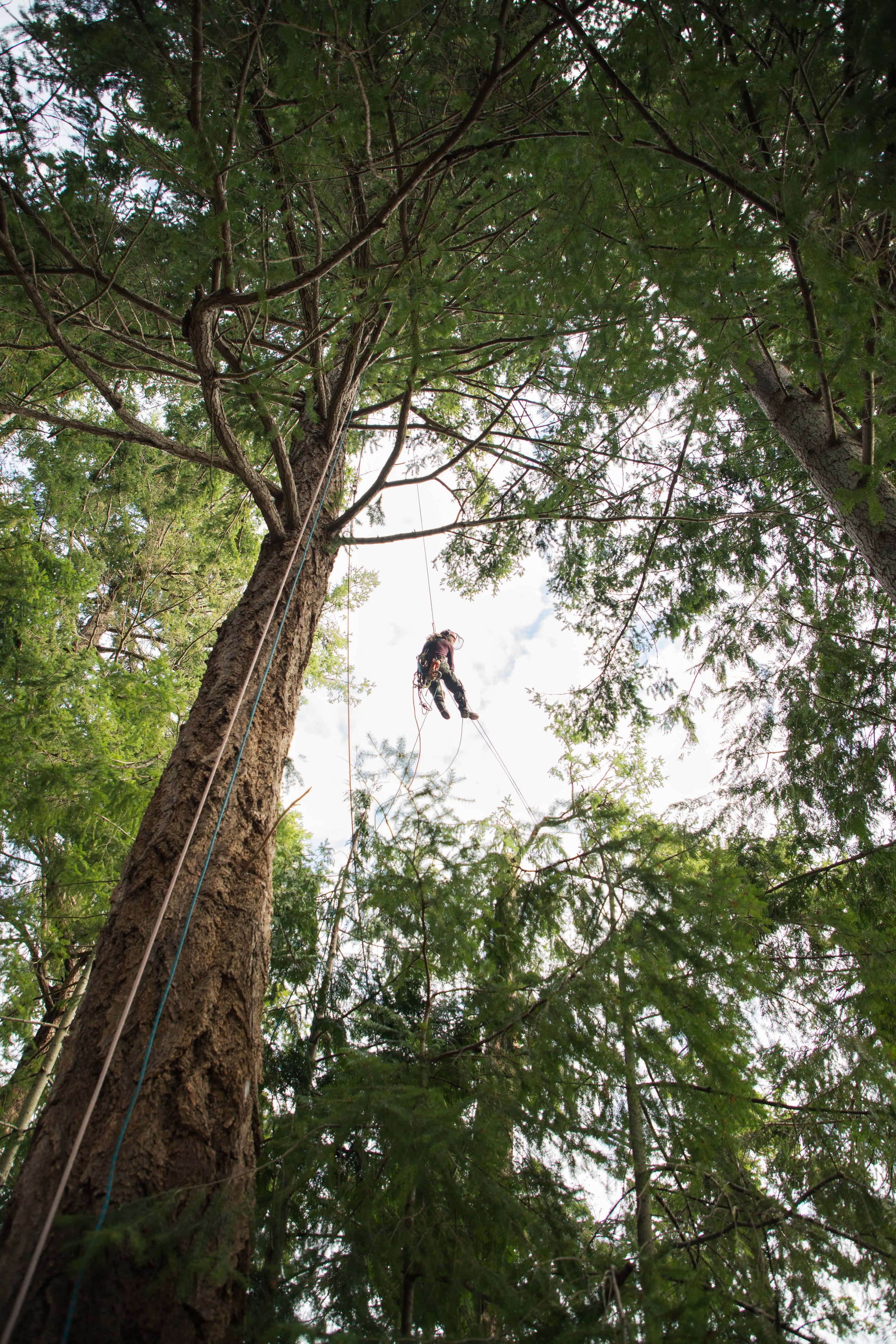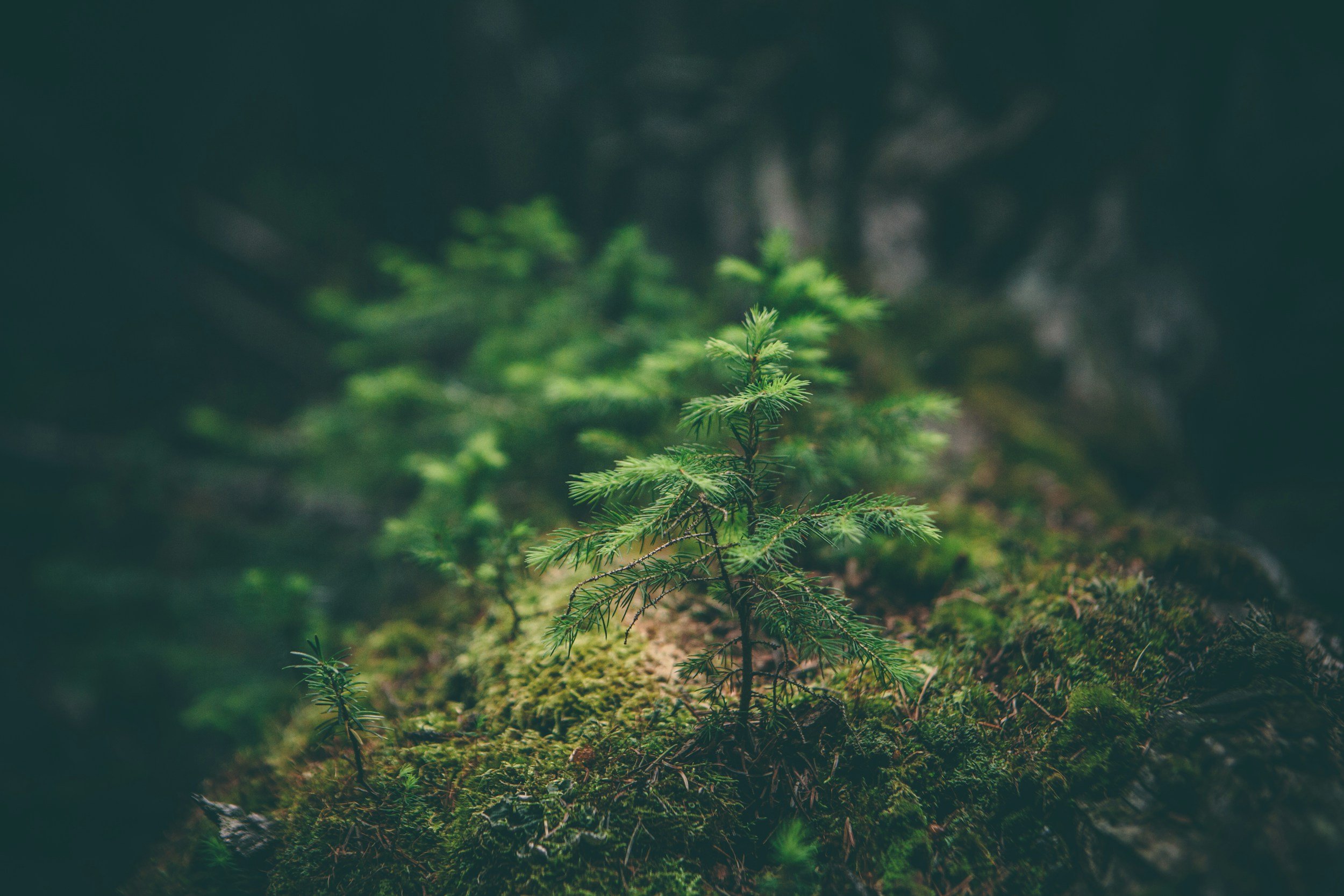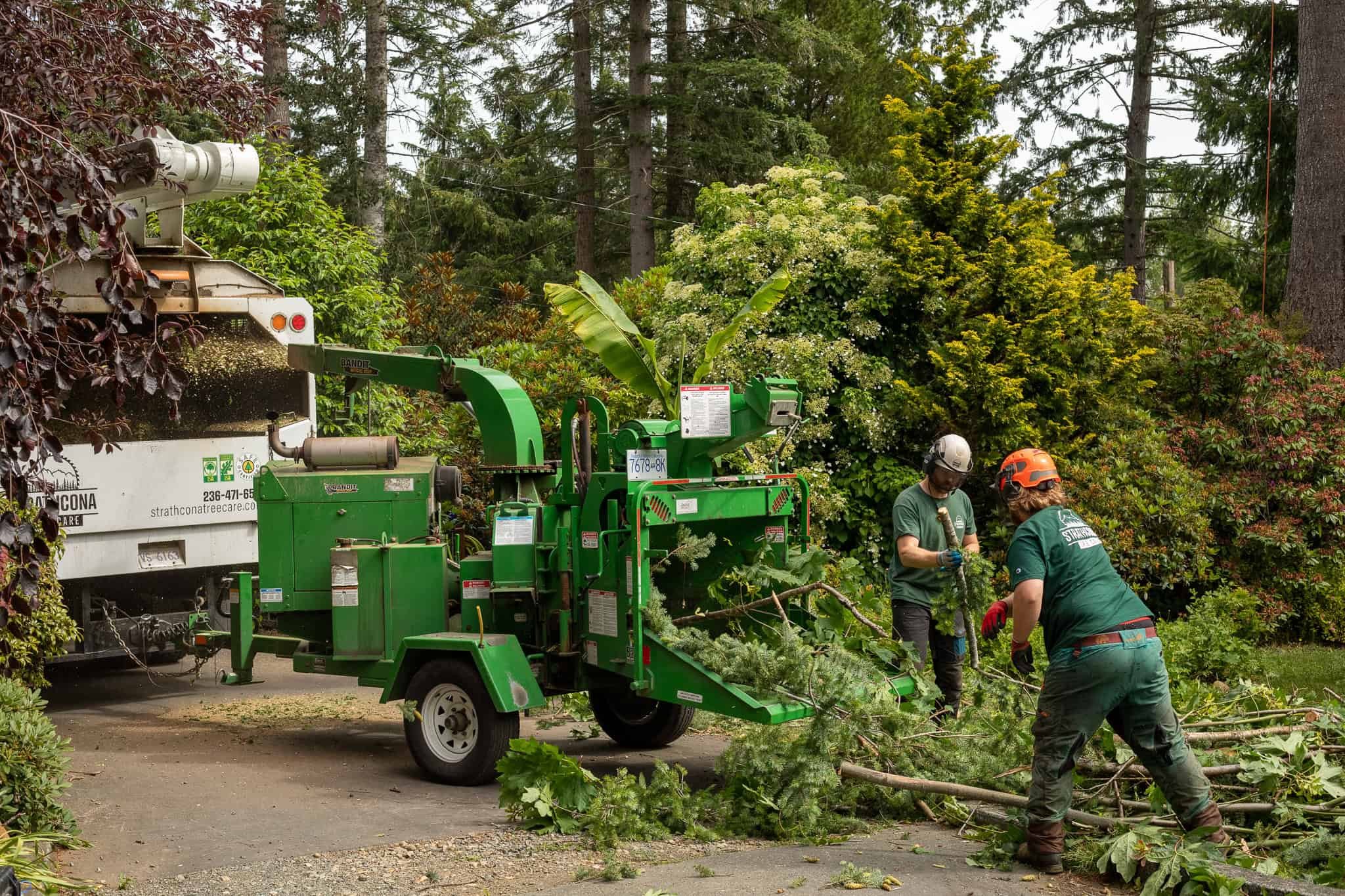
Tree Support Systems
Tree Support Systems
Some trees may need a little support and this can come in the form of cabling, bracing or staking. Tree support systems are a proactive and preventative technique to support a tree with poor or weak structure. Not all trees need it and supplemental structural support systems should only be installed based on a thorough inspection and evaluation of tree structure by our certified arborists.
Types of Tree Support Systems
Cabling and bracing are the most commonly used tools to protect or improve a tree’s structural integrity. Staking methods are used less frequently but are sometimes needed to support a newly planted tree while it establishes a supportive root system.
Cabling
Cabling reduces the potential risks of structural failure by limiting the movement of stems and branches with weak attachments. The cables are typically installed in the upper crown or across a weak crotch (the bottom point of connection between two or more tree limbs or trunks). Static cabling systems are made from high-strength, long-lasting steel wire and hardware, and allow for very little movement in the tree. Dynamic cabling systems are made from synthetic fabric rope and sling attachments and allow for more natural movement in the tree.
Bracing
Bracing rods are installed in trees with multiple or co-dominant leaders to reduce the risk of the leaders splitting or to repair splits that have already occurred. The rigid braces are installed directly through the union of the weak branches and stems. Bracing rods are combined with cabling to gain the most stable support.
Staking
Staking is a method used to hold a tree upright and the root ball in place or to straighten the trunk. Staking can involve tying rigid stakes to a young tree’s trunk or affixing three or four wires or straps known as ‘Guys’ to the tree and then anchoring the guys to the ground with stakes or other hardware.
Staking can be useful in certain circumstances. It is most typically used on a newly planted tree to give added reinforcement while it establishes enough of a root system to stand on its own.
Did you know?
Once a support system has been installed it should be inspected from the ground annually and up close aerial inspections are recommended every 3-5 years by a certified arborist to ensure the integrity of the hardware, cable, and tree sections.

Frequently Asked Questions
Clients often have questions about best practices within Arboriculture and tree care. We’re here to answer them, and you may find answers to common inquiries here, but don’t hesitate to reach out.
-
Description text goes hIf you are located within a Municipality or Regional District look up your local tree bylaws for restrictions;
-
Although tree removal is often a last resort, there are circumstances when it is necessary for safety if the tree is dead, dying, or considered irreparably hazardous. Other circumstances include building and landscape projects or simply a tree out growing its space.
-
There are a few main factors that are taken into consideration when providing a cost for tree removal, these include tree size, condition, location and management of tree debris.
-
Yes, we promote this where possible. Branches are chipped into arborist mulch that can be applied to paths, flower beds and under trees as a way of organically feeding other trees while maintain moisture in the soil. Wood can be left in longer lengths to be milled for lumber/live edge, bucked into firewood or simply left in a forest area to break down into the soil.


